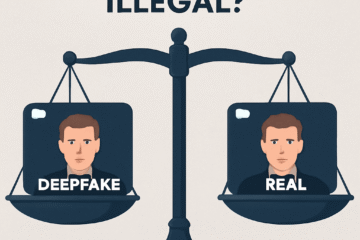TL;DR — AI-generated faces are often more believable than real ones—and it’s not your fault. Learn why your brain gets tricked and how to outsmart synthetic realism.
The Illusion of Reality: Why We Trust AI Faces
Did you know that in recent studies, people rated AI-generated faces as more trustworthy than real ones? That’s not just surprising—it’s dangerous.
Researchers at the University of Washington and Lancaster University found that AI faces triggered more positive gut reactions, especially when the viewer wasn’t consciously aware they were fake.
But why?
🤯 Cognitive Traps That Make You Believe
Your brain takes shortcuts to process faces—this is called “heuristic thinking.” AI-generated faces often:
- Have symmetrical features (which the brain loves)
- Show neutral or slightly smiling expressions (perceived as non-threatening)
- Lack the subtle imperfections that trigger skepticism
Together, these features create a face that’s “too perfect”—but also, paradoxically, too trustworthy.
Real Risks of Believing Fake Faces
| Risk | Example |
|---|---|
| Catfishing | AI-generated profiles used in dating scams or identity fraud |
| Fake Testimonials | Stock-style avatars on scam websites claiming false benefits |
| Disinformation Campaigns | Fake influencers spreading political or commercial propaganda |
These faces aren’t just harmless graphics—they’re tools used in fraud, manipulation, and misinformation.
How to Outsmart Synthetic Realism
Here are 4 steps to protect yourself and your digital community:
- Zoom In on the Details
Look for off-center pupils, overly smooth skin, or inconsistent lighting around the ears and hairline. - Check Image Origins
Use TinEye or Google Reverse Image Search to find where a face appears online. - Stay Skeptical of “Too Perfect” Profiles
Especially on platforms like LinkedIn, Instagram, and dating apps. - Explore VerifAI’s Resources
Visit our AI Detection Tips and learn how to stay ahead of evolving fakes.
Final Thought
Your brain is built for trust—but today’s digital world demands critical vision. The more you understand how AI works (and why your brain falls for it), the less likely you are to be fooled.
At VerifAI, we help you stay one step ahead. Not just by pointing out what’s fake—but by explaining why it feels real.



2 Comments
Yassine · April 25, 2025 at 1:22 pm
Very interesting post I advise every one to read it
Jacob · April 25, 2025 at 7:46 pm
This happened to me before lol